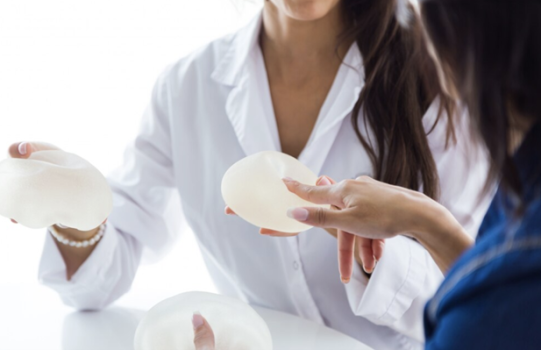Breast Reconstruction After Mastectomy: Options and Considerations
Breast cancer is a life-altering diagnosis that can have profound physical and emotional effects on women. One of the most significant surgical decisions a patient may face after a mastectomy is whether to undergo breast reconstruction. This blog aims to provide a comprehensive overview of the options available for breast reconstruction after mastectomy, along with important considerations to keep in mind during this transformative journey.
Understanding Breast Reconstruction
Breast reconstruction is a surgical procedure aimed at restoring the appearance of the breast after mastectomy (the surgical removal of one or both breasts, typically due to cancer). The goal is not only to recreate the breast’s shape and size but also to help women regain their sense of femininity and self-esteem after a significant loss.
Why Consider Breast Reconstruction?
Women may choose breast reconstruction for several reasons:
- Physical Restoration: Reconstructive surgery can restore the contour of the breast and improve symmetry.
- Psychological Benefits: Many women report feeling more confident and complete after reconstruction, which can significantly impact their mental and emotional well-being.
- Clothing Fit: A reconstructed breast can allow women to wear a wider variety of clothing without feeling self-conscious about their appearance.
- Personal Choice: Ultimately, the decision to undergo reconstruction is a personal one, and many women prefer to have the option of restoring their breast’s appearance.

Types of Breast Reconstruction
There are two primary methods for breast reconstruction: implant-based reconstruction and autologous tissue reconstruction. Each method has its advantages and considerations.
1. Implant-Based Reconstruction
Implant-based reconstruction involves using silicone or saline implants to recreate the breast’s shape and size. This approach can be performed either immediately after mastectomy or at a later date.
Immediate vs. Delayed Reconstruction
- Immediate Reconstruction: This procedure is performed at the same time as the mastectomy. Surgeons often place the implant or an expander (a device used to stretch the skin and tissue) during the same surgery. This approach can reduce the overall number of surgeries needed and allow for a more natural-looking result.
- Delayed Reconstruction: If a woman chooses to wait until she has completed any additional treatments (such as chemotherapy or radiation), she may opt for delayed reconstruction. This approach allows time for the body to heal and for the patient to consider her options thoroughly.
Advantages of Implant-Based Reconstruction
- Less Recovery Time: Implant surgery typically involves a shorter recovery time compared to tissue flap surgery.
- Simpler Procedure: The process is often less complex than autologous tissue reconstruction, making it a more straightforward option for many patients.
- Variety of Sizes and Shapes: Implants are available in various sizes and shapes, allowing for customization to match the other breast.
Considerations
- Potential Complications: Complications may include infection, implant rupture, or capsular contracture (hardening of the tissue around the implant).
- Lifespan of Implants: Implants may require replacement or revision over time. Women should be aware that regular monitoring is necessary to ensure the implants remain intact and functional.
2. Autologous Tissue Reconstruction
Autologous tissue reconstruction, also known as flap reconstruction, uses the patient’s own tissue to recreate the breast. This approach often provides a more natural feel and appearance, as the tissue used is similar to breast tissue.
Common Flap Techniques
- TRAM Flap (Transverse Rectus Abdominis Muscle): This technique uses tissue from the lower abdomen, which is also beneficial for women seeking a tummy tuck effect.
- DIEP Flap (Deep Inferior Epigastric Perforator): This is a variation of the TRAM flap that spares the abdominal muscles, using only the skin and fat. It results in less abdominal weakness and a quicker recovery.
- Latissimus Dorsi Flap: This technique utilizes tissue from the upper back. It can be combined with implants to achieve the desired breast size and shape.
Advantages of Autologous Tissue Reconstruction
- Natural Feel and Appearance: Because the tissue is from the patient’s body, it often feels more natural than implants.
- Long-Lasting Results: Autologous tissue may age more gracefully and does not require replacement as implants do.
- No Risk of Implant-Related Complications: There is no risk of rupture or capsular contracture, common complications associated with implants.
Considerations
- Longer Recovery: Recovery from flap surgery typically takes longer, as it involves both the breast and donor site (e.g., abdomen or back).
- Surgical Complexity: The procedure is often more complex and requires a skilled surgeon experienced in microsurgery.

The Decision-Making Process
Choosing the right breast reconstruction option is a deeply personal decision influenced by various factors, including:
Medical Considerations
- Health Status: Women with certain medical conditions may be advised against specific types of reconstruction. It’s crucial to discuss your health history with your surgical team.
- Cancer Treatment Plan: Some treatments, such as radiation therapy, can affect the choice of reconstruction method. Surgeons may recommend waiting for reconstruction after completing radiation.
Personal Preferences
- Aesthetic Goals: Consider your desired breast size, shape, and feel. Consult with your surgeon about your expectations and how different options can meet those needs.
- Lifestyle Considerations: Think about your daily activities and how reconstruction might impact them. Some women prefer a simpler recovery process, while others are willing to invest the time for a more natural result.
Emotional Readiness
- Mental Well-Being: Undergoing reconstruction can be emotionally challenging. It’s important to assess your emotional readiness for another surgery and to discuss any concerns with a mental health professional or support group.
The Surgical Experience
Preoperative Preparations
Before surgery, patients typically undergo several steps, including:
- Consultations: Meet with your surgeon to discuss your reconstruction options, aesthetic goals, and any concerns.
- Physical Exams: A thorough examination ensures you are a good candidate for the chosen procedure.
- Imaging: In some cases, imaging studies like mammograms may be necessary to evaluate breast tissue.
The Surgery
The surgical process will vary depending on the chosen method. Regardless of the technique, you can expect the following:
- Anesthesia: Most breast reconstruction surgeries are performed under general anesthesia.
- Incisions: Incision patterns will differ based on the procedure. For implant-based reconstruction, incisions may be made in the breast fold, while flap surgery will require incisions in the donor site.
- Recovery Room: After surgery, you will spend time in a recovery room before being discharged home. The length of stay will depend on the procedure’s complexity.
Postoperative Care
Following surgery, postoperative care is crucial for a smooth recovery. General recommendations include:
- Pain Management: Pain medications will be prescribed to manage discomfort.
- Activity Restrictions: Avoid strenuous activities and heavy lifting for several weeks.
- Follow-Up Appointments: Regular follow-up visits are necessary to monitor healing and address any complications.

Emotional and Psychological Considerations
The journey through breast reconstruction is not just physical; it is also emotional. Many women experience a range of feelings, including relief, anxiety, and sadness. Here are some considerations for mental well-being during this journey:
- Support Systems
Engaging with support groups, family, and friends can provide comfort and understanding. Sharing experiences and hearing others’ stories can make the process feel less isolating.
- Mental Health Resources
Therapists or counselors specializing in oncology can help patients cope with the emotional challenges associated with breast cancer and reconstruction.
- Realistic Expectations
Understanding that the reconstruction process is not a return to the pre-cancer state is essential. Embracing the changes and finding beauty in the new form can foster a positive outlook.
Conclusion
Breast reconstruction after mastectomy is a deeply personal decision that involves various options, considerations, and emotional complexities. Whether you choose implant-based reconstruction or autologous tissue reconstruction, the goal remains the same: to restore your body and boost your confidence after a challenging journey with breast cancer.
Before making a decision, take the time to educate yourself about the different procedures, consult with qualified professionals, and consider your personal goals and lifestyle. Remember that you are not alone in this journey, and there is a network of support available to help you navigate your options and ultimately embrace your new self. With the right approach, breast reconstruction can be a powerful step towards healing and reclaiming your identity.
